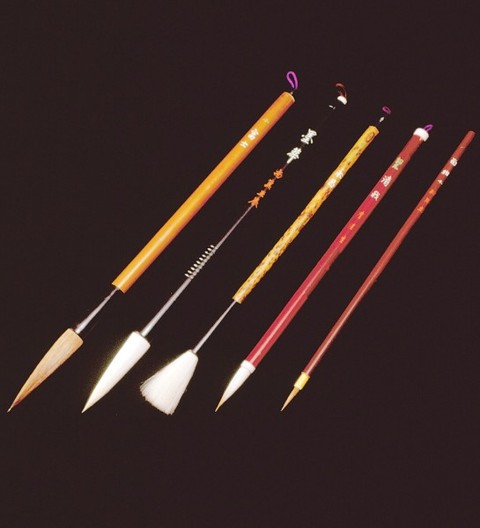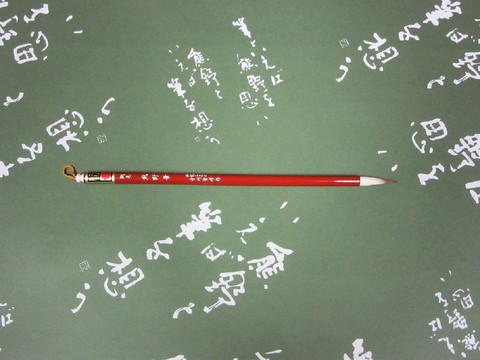
江戸時代、農業だけでは生活が支えきれない農民の多くが、農閉期に現在の和歌山県にあたる紀州の熊野地方や、奈良県にあたる大和の吉野地方に出稼ぎに行き、故郷に帰る時に、それらの地方で作られた筆や墨を仕入れて行商を行っていました。そうしたことから熊野と筆の結び付きが生まれました。
江戸時代後期に、広島藩を治めていた藩主の浅野家の御用筆司(ごようふでし)の所で、筆作りの方法を身につけた熊野の住人が、村に戻って村民にその技法を伝えたのが熊野筆の始まりとされています。

During the Edo period (1600-1868), many farmers found life very difficult. When there was no farm work, peasants went off in search of work to the Kumano district in Kishu corresponding to present-day Wakayama and the Yoshino area of Yamato, which is now Nara Prefecture. On returning to their homelands they sold writing brushes and ink they had acquired from these places. Ultimately, this led to the making of brushes in Kumano. Toward the end of the Edo period, brushes were being made in a workshop set up by the Asano family, head of the Hiroshima clan. The techniques of brush making became a firmly established craft among the people and the handing down of these skills within the village marked the beginnings of Kumano brushes as they are known today.
Many kinds of brushes for use in schools, for calligraphy, painting and even for makeup are being made by 134 firms employing 3,500 people, among whom are 18 government recognized Master Craftsmen.
出品作品
イタチ毛小筆 伝統工芸士 中川聖峰作 税込2,700円(本体価格2,500円)